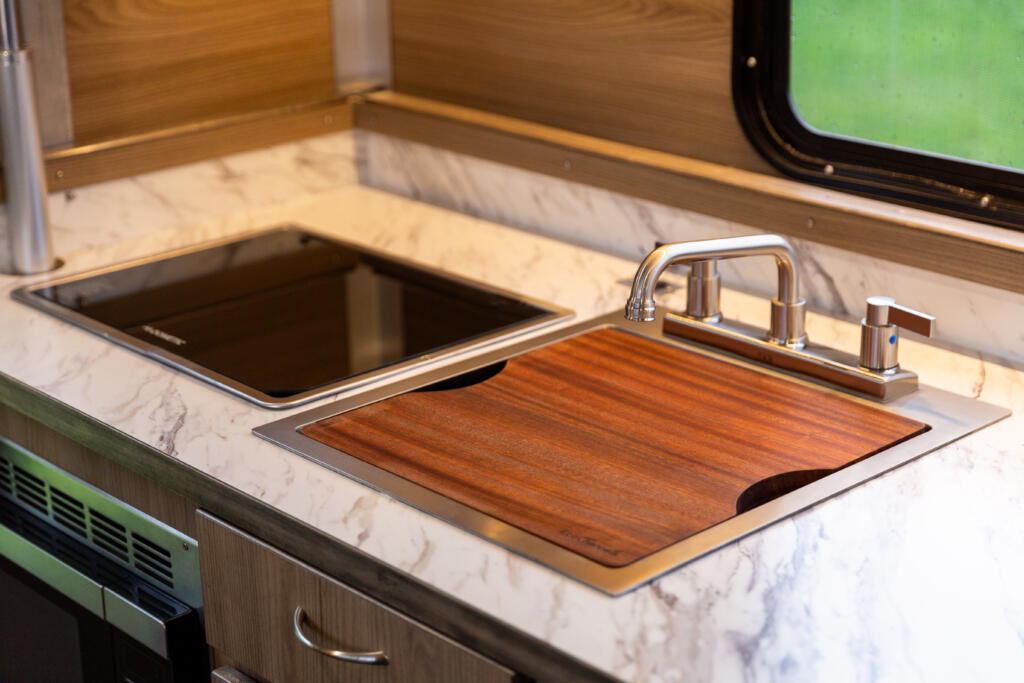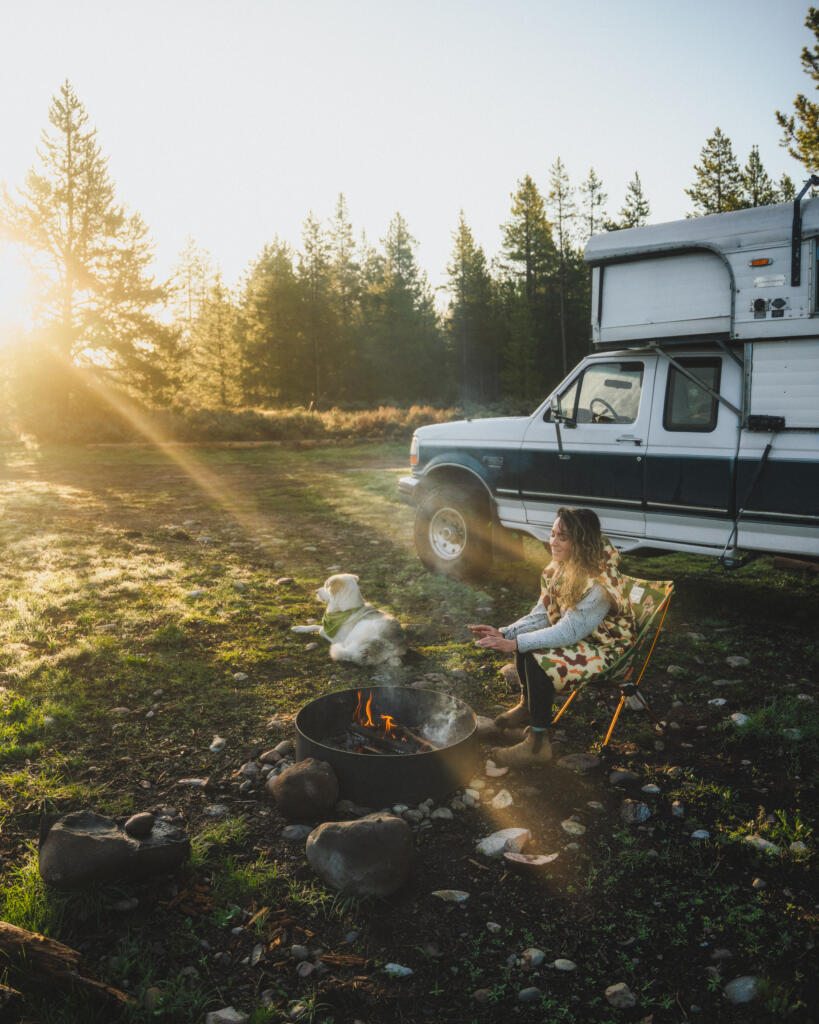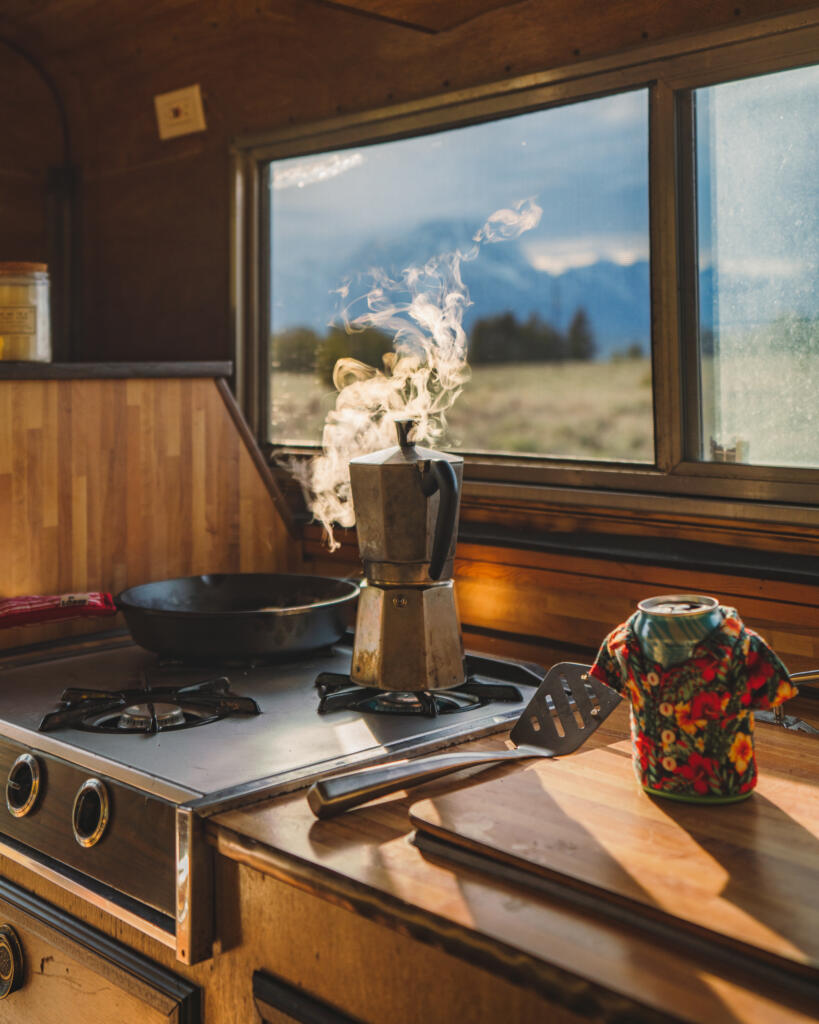Quick Setup Outdoor Kitchen Tips
Isn’t it time you stepped up your wilderness cooking? Whether you’re storing all your kitchen gear in a 10-gallon plastic tote or organizing it within a customized, hand-crafted chuckbox—we’ve got tips to help build a smarter outdoor kitchen. (While we appreciate the simplicity of a Rubbermaid tote, seriously some of these chuckboxes are gorgeous.) Anyways, let’s upgrade your setup with the right gear and clever organization to ensure every summer meal is both delicious and simple—not just teetering on that fine line between raw and charred that often comes with outdoor cooking.
Gearing Up
You’re likely not starting from scratch with your kitchen setup—but here are a few essentials to consider:
Tableware
While disposable plates, cups, and cutlery offer cheap convenience, their environmental cost is high when we could opt for reusable items that double for camping or any outdoor gatherings. Consider investing in a mess kit for each camper that includes a personal plate, bowl, cup, and a spork to limit the dishes or even wash out that red solo cup as you go to limit the disposable waste. In terms of utensils, a good chopping knife always beats a pocket knife and it’s helpful to also carry a cutting board, peeler, stirring spoon, tongs, spatula, corkscrew, can opener, and collapsible measuring spoons and cups. Try to consider the meals you’re planning and any tools that might come in handy when preparing for your journey—more on prep later.
Cookware
It’s okay if your camping cookware collection includes those old pots and pans you couldn’t bear to donate—we do it too. There’s something about taking pristine cookware into the wild that just feels wrong. But make sure you have the basics: a large skillet or cast iron pan, a good-sized pot with a lid for boiling water, and potholders. Ready to elevate your campfire cuisine? Consider a traditional cast iron Dutch oven. It’s perfect for cooking hearty meals like red chili, BBQ pork shoulders, green chile stew, creamy mac & cheese, and marinated chicken thighs. Remember to preheat your cast iron to sear the meat well before reducing the heat and letting the Dutch oven work its slow-cooking magic. The tantalizing smells will let you know when it’s time to feast.
Stove
It’s pretty handy that Alaskan Campers come equipped with a standard 2-burner stove and stainless steel sink, making it easier to cook when it’s too windy or just unpleasant outside. Right now, though, let’s get that outdoor kitchen ready for the clear, sunny days ahead. A collapsible camp griddle has been a nice addition to our arsenal. We park this multitasking beast alongside our cooler and a folding table and we’re flipping pancakes for breakfast or sizzling up burgers for dinner. It’s perfect for taco nights, hibachi-style meals, stir-fries, and golden grilled cheese sandwiches. Although easy to clean, a camp griddle does need initial seasoning and ongoing care to avoid rust, particularly if it’s left unused in your camper during damp periods. If you’ve got some picky eaters in the crew, be mindful with eggs as griddles tend to darken whites quickly and can impart flavors from previous meals.

Don’t Forget
Making lists for your camping trip? Here are some items we always seem to leave behind. Always remember to bring a tablecloth to keep your dining area clean, and a coffee maker or French press to ensure you have hot coffee ready by the fire, which doubles as a source of hot water for cleaning or other needs. Pack trash bags, gloves, a sponge, and dish soap for easy cleanup. Aluminum foil, paper towels, and a few leftover containers are indispensable for food preparation and storage. Lastly, to simplify cooking without sacrificing flavor, opt for premixed spice blends (think: McCormick or Slap Ya Mama) which save space and prevent the need to carry multiple spice containers.
Prepping at Home
Preparing more than just hotdogs and marshmallows for your camping meals takes a bit of upfront effort but pays off in convenience. Start with a checklist to ensure no essentials are forgotten and neatly pack your cooking gear in labeled totes for quick retrieval. Pre-cut meats and vegetables and stash them in reusable containers to save time and space when you’re ready to cook. Prepare and label your dry mixes ahead of time to minimize bulky boxes and extra mess. Lastly, consider pre-making a hearty soup or stew, portioning it, and freezing it. Not only does it help keep the cooler cold, but it also provides ready-to-eat meals over several days.

Setting up at Camp
When setting up your camp kitchen, ensure you have a stable, flat surface for meal prep and cooking. If your campsite doesn’t provide a suitable area, bring a folding table; some even come with built-in storage for kitchen essentials like utensils and dishware. In addition to your Alaskan’s indoor sink, it’s nice to have a dedicated sanitation space for washing and rinsing dishes outside. We suggest setting up a wash station using a water jug with a spigot, secured with a bungee cord to the picnic table, and establishing a designated area away from your main campsite to separate garbage, compost, and recycling into different bags.
Keeping animals and critters away
We’ll get to food storage and camp cleanliness in a second, but first, let’s talk about choosing a spot to camp if you’re venturing beyond the campground. To simplify, water sources, wooded areas, and dense vegetation attract animals like snakes, raccoons, and bears. Opt for a flat, open space with minimal tall grass and good elevation to prevent flooding. Ensure there are trees nearby for hanging trash safely out of reach and find a spot that’s at least 200 feet away from water to discourage animal visitors. When you’re roughing it, avoid scented products that can attract wildlife and use natural repellents like citronella or apple cider vinegar to keep insects at bay. Always dispose of trash immediately and store trash securely away from the campsite and store food in a hard-sided, bear-resistant (ideally) cooler/bins fully secured to prevent wildlife access.
Camp Cleanup
Hey—we know y’all are good campers and always follow LNT principles, so these are more reminders and tips than an announcement from National Parks. To keep your campsite tidy, lay a trap or ground cover under your eating areas to catch crumbs and deter ants. Always clean up before dusk to avoid nighttime messes, especially important if daylight is limited. Dispose of dishwater well away from your campsite to avoid attracting wildlife; even small traces of food residue can lure animals with keen senses of smell. Lastly, and it goes without saying, manage your campfire responsibly by using existing fire enclosures when possible, keeping fires small, and ensuring they’re completely extinguished before you leave.

That’s all for now! If you’re looking for more camping insights, why not check out our blog posts on Five Simple Camp Breakfast Ideas or our Handy Guide to Hard-Sided, Pop-Up Truck Campers.
